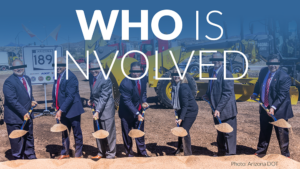Related Resources
Community Connectors Portal: Tools for advocates > Who is involvedLobbying 101
Advocacy 101: Lobbying
Some people use the word “lobbying” for any outreach to lawmakers or other government officials. But this word actually has a specific legal meaning, so understanding its definition is important. That meaning can change depending on the context, so we will give you an overview of some of the major legal definitions.
The first thing we recommend is this: If your organization plans on lobbying government officials, we recommend that you seek legal counsel (check your local area Bar Association for pro bono non-profit legal help, such as this example from DC) to ensure you are complying with federal and state law. This fact sheet is not legal advice and we cannot provide it.
Yes, you can lobby, but you need to understand the guardrails
The IRS rules bar organizations from receiving 501(c)(3) status if “a substantial part of its activities is attempting to influence legislation.” But all advocacy is not lobbying. An organization is only “attempting to influence legislation” if it contacts or urges the public to contact a federal, state, or local legislative body about a specific piece of legislation. This means that even a nonprofit can spend some portion of its time on actual lobbying under a certain threshold. It’s even more important to understand that general education is not considered lobbying if it doesn’t meet the bar described above: 501(c)(3) organizations are permitted to educate lawmakers about public policy issues without jeopardizing their tax-exempt status. (Nonprofits are NOT permitted to do electioneering on any level, which is using any of your time and resources to support a specific candidate’s election or re-election.)
The difference between direct lobbying versus grassroots advocacy comes down to the audience, messaging, and specific actions at play, per the IRS. With direct lobbying, messaging is directly made to a decision maker about a specific decision, like a particular piece of legislation. A meeting with your congressperson asking them to sponsor or vote on a bill would fall into this category. Grassroots lobbying is messaging directed to the general public on either a key decision or key issue tied to a related decision, and asking the general public to take some action to advance the decision/issue. The time spent putting together an email alert or campaign encouraging your supporters to contact their member of Congress on an issue would fall into this category.
Congress: In addition to IRS rules, Congress requires any lobbying entity to publicly disclose their activities. Disclosure requirements are limited to professional lobbyists, or people who are compensated to engage in direct contact with lawmakers on behalf of a client or an employer.
State legislatures: State legislatures have their own rules and definitions for lobbying, which vary state by state. You will need to know your state’s requirements. For example, Massachusetts requires anyone who is paid more than $2,500 or works more than 25 hours per quarter engaging in lobbying communication with government employees to register with the Secretary of the Commonwealth. In Idaho, one must register if they are paid $250 in a year to lobby a legislator, an executive official or to develop or maintain relationships with legislators or executive officials.
Local governments: Local governments rarely have separate rules on lobbying, but the IRS rules still apply to lobbying at the local level.
Why lobby?
Elected officials—and the legislation they pass—determine both funding levels and policy direction for transportation programs. State and local transportation departments and agencies have some discretion over their spending priorities, but much of that discretion is limited by legislative guardrails. So sometimes, advancing a good project or stopping a bad one means lobbying legislators to change those guardrails.
Lobbying best practices
There’s no single right approach. But given our experience (and that of our partners) lobbying for smart transportation policy at all levels of government, we have some suggestions.
Lobbying is fundamentally about building relationships with legislators and their staff. Our 10 tips for building successful relationships is a great place to start. Know that sometimes you might meet with the elected official, other times a senior or junior level staffer with various levels of influence on the elected official they work for. (Don’t assume that because someone is young that they have no influence or power within that office. Most Capitol Hill staffers, even the influential ones, tend to be young.) Furthermore, those staffers may move on to work for other elected officials, but the relationship they cultivated with you, for good or for bad, will carry on.
Good working relationships are not enough to gain influence through lobbying. When approaching a legislator or their staff, you should ask yourself why this person would want to meet with you. Are you a subject matter expert on an issue they’re interested in pursuing? Then be the most informed person in the room. Do you represent a significant number of their constituents and/or employers in their district? Then make sure you hammer home how much the people you represent care about the issue, or bring some of them with you.
You and your organization have limited time to engage in lobbying, so selecting the appropriate decision maker is crucial. If you’re lobbying on a transportation issue, find who sits on the committee that handles transportation legislation, or other legislators that have been outspoken about transportation issues in the past. If your question is focused on funding, find the legislators that hold the purse strings. Narrow your search as much as possible so you can spend time engaging deeply with a handful of legislators rather than spreading yourself too thin.
Read these resources for nonprofits
There are organizations and consultants who specialize in providing free advice to nonprofits to understand what lobbying is, what it is not, and when and how they can engage in advocacy while staying well within the IRS regulations for a nonprofit organization. Here are a handful of resources we’ve read and are worth your time:
The basics and legal guidelines:
- Here are the basics from the Internal Revenue Service on lobbying and advocacy for nonprofits.
- National Low Income Housing Coalition put together this very concise but thorough three-page summary of advocacy and lobbying for nonprofits
- Alliance for Justice and Bolder Advocacy: Grantee FAQ
- Alliance for Justice: BEING A PLAYER: A Guide to the IRS Lobbying Regulations for Advocacy Charities
- Alliance for Justice: The Rules of the Game: A Guide to Election-Related Activities for 501(c)(3) Organizations
How to lobby:
- Here’s a presentation from the League of American Bicyclists with useful best practices for effective lobbying






